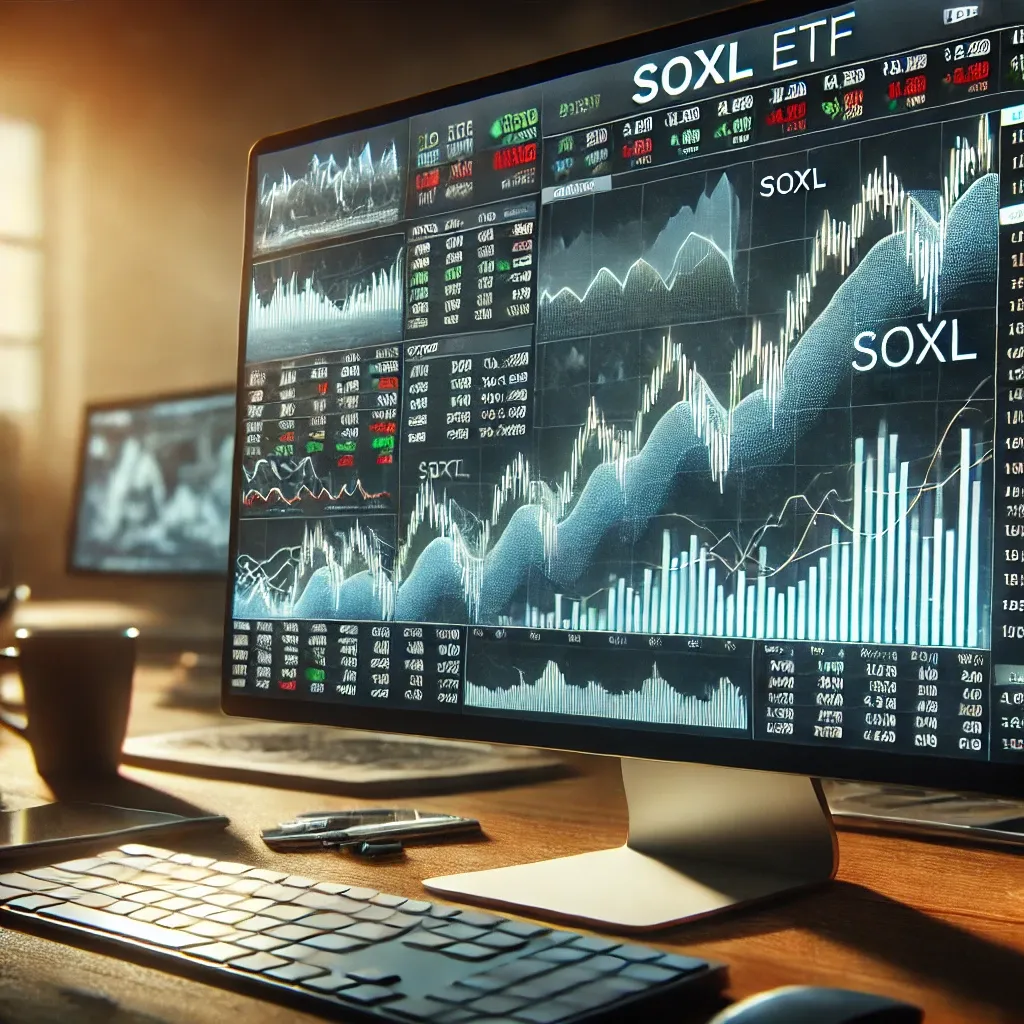SOXL is a popular ETF for those seeking exposure to the semiconductor industry. But what about the costs? Understanding SOXL fees and how they affect your investment is key to maximizing returns. Let’s break down everything you need to know about the fees, structure, and performance of SOXL so you can make an informed decision.
What Are SOXL Fees?
When investing in ETFs, fees are a critical consideration. SOXL, an ETF offered by Direxion, is known for its 3x leveraged exposure to the semiconductor sector. But like any financial product, SOXL comes with a set of fees. These fees consist mainly of the expense ratio, which investors should pay attention to.The expense ratio for SOXL is 0.95%. This means that for every $10,000 you invest in SOXL, you’ll be paying $95 annually in management fees. The expense ratio covers the operational costs of running the ETF, such as administrative, marketing, and management fees. Although 0.95% may seem high compared to regular ETFs, it’s important to remember that SOXL offers leveraged exposure, and this added complexity often comes with higher costs.Now, why should you care about SOXL’s fees? Well, the higher the fees, the more they eat into your returns over time. For instance, if your portfolio grows at a rate of 10%, a 0.95% fee will reduce your net return to 9.05%. Over the long term, these seemingly small fees can have a significant impact on your overall investment.Leveraged ETFs like SOXL also come with additional risks. While you can potentially earn higher returns due to the 3x leverage, this also means you could lose money at a faster rate during market downturns. As such, investors should carefully consider whether the potential reward outweighs the risks and costs.
SOXL vs. SOXS: Key Differences
Now that we’ve covered SOXL’s fees, let’s explore how SOXL compares to another similar product: SOXS. SOXS is essentially the inverse of SOXL, meaning it aims to provide 3x inverse exposure to the same sector. In simpler terms, SOXS profits when semiconductor stocks fall, while SOXL profits when they rise.Both SOXL and SOXS have similar fee structures, with SOXS also charging an expense ratio of 0.95%. However, their performance patterns are polar opposites, and investors often use these two ETFs for different purposes. SOXL is for those bullish on semiconductors, while SOXS is for those bearish on the sector.If you’re trying to decide between SOXL and SOXS, it largely comes down to your market outlook. If you believe the semiconductor industry will experience growth, SOXL is the better option. On the other hand, if you anticipate a downturn, SOXS may be the more appropriate choice.
List of Differences Between SOXL and SOXS:
- Performance Orientation: SOXL rises with semiconductor stocks, while SOXS rises when they fall.
- Risk Exposure: Both carry high risk, but SOXL may appeal to risk-tolerant bulls, and SOXS to bears.
- Expense Ratios: Both charge an identical 0.95% expense ratio.
- Market Trends: SOXL thrives in bullish markets, SOXS thrives in bearish ones.
- Leverage: Both ETFs use 3x leverage, amplifying returns and losses.
Ultimately, the choice between SOXL and SOXS depends on how you foresee the semiconductor market performing in the near future.
How SOXL Fees Affect Stock Returns
Leveraged ETFs like SOXL are designed to magnify short-term stock price movements by 3x. While this can lead to impressive short-term gains, it also means that fees can have an outsized impact on returns over time, especially if the market doesn’t move in your favor.For instance, if the semiconductor market experiences a prolonged downturn, the combination of leverage and fees can lead to substantial losses. Conversely, in a strong market, the effect of fees may be more negligible relative to the outsized gains.
Here’s a breakdown of how SOXL’s 0.95% fee affects stock returns:
- Short-Term Trading: If you’re holding SOXL for just a few days or weeks, the 0.95% fee won’t have a massive impact. It’s more relevant for long-term holders.
- Compounded Fees: Over time, the expense ratio can add up, eating into your gains.
- Return Reduction: A 0.95% annual fee means your total return will always be slightly less than the index.
- Potential Diminished Leverage: Fees can affect the power of the 3x leverage over time.
- Risk of Amplified Losses: Losses are magnified due to leverage, and fees can accelerate the erosion of your investment.
That’s why it’s important to monitor your SOXL position closely and evaluate whether the 0.95% fee is worth the potential rewards. You should only consider holding SOXL long-term if you have a strong conviction in the performance of the semiconductor industry.
Conclusion
Understanding the fees associated with SOXL is essential for maximizing returns and making informed investment decisions. With an expense ratio of 0.95%, SOXL charges more than traditional ETFs, but offers the unique advantage of leveraged exposure to the semiconductor sector. For short-term traders, the fees may not be a significant concern, but long-term holders should be aware of how these costs can eat into returns.In contrast, investors also have the option of SOXS, which offers inverse exposure to the same sector. While both ETFs come with similar fees, they serve different purposes, allowing investors to choose based on their market outlook.In the words of Warren Buffett: “The stock market is designed to transfer money from the Active to the Patient.” Whether you choose SOXL for its bullish exposure or SOXS for a more defensive approach, always remember that patience, combined with a keen awareness of fees, will be key to your long-term success in ETF investing.






